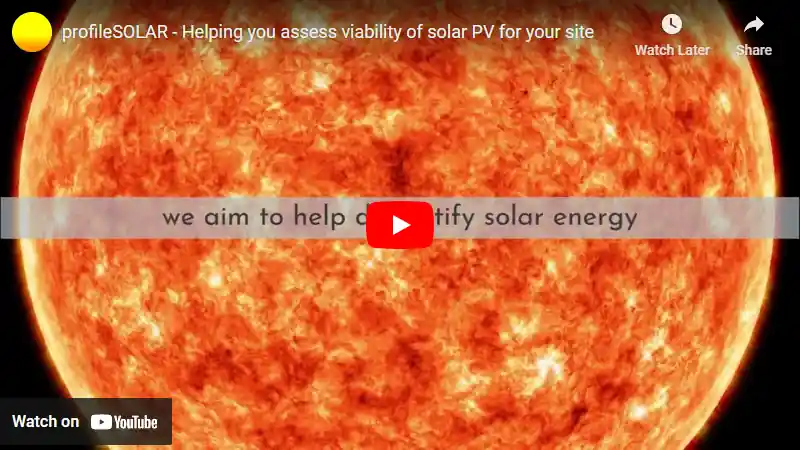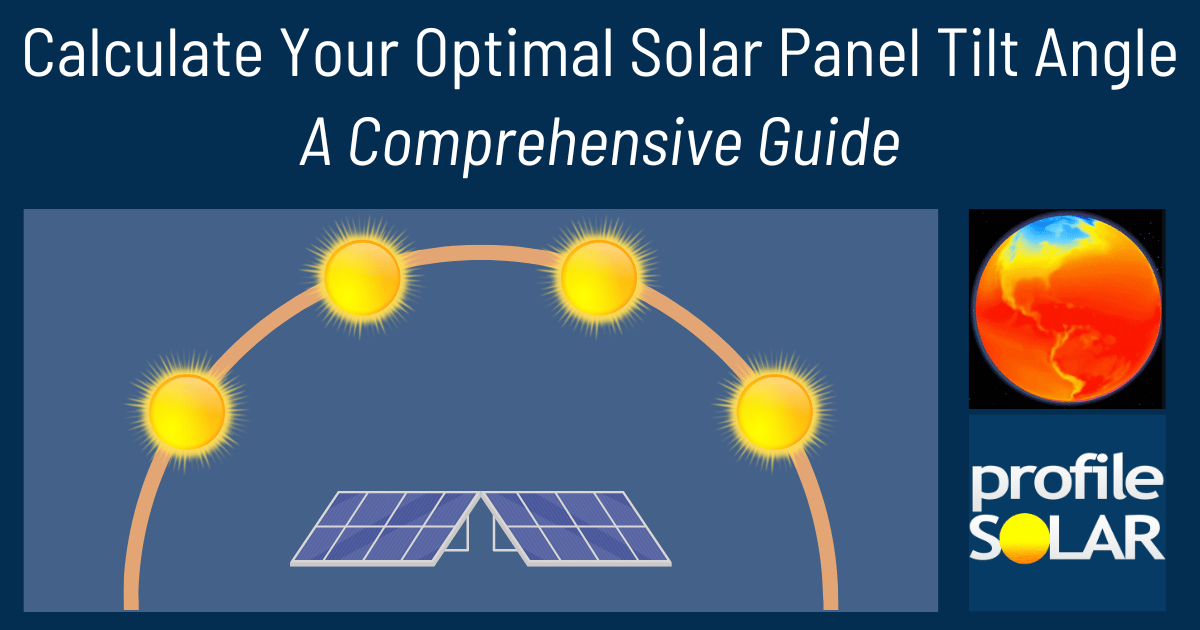

Based on the given data, Orange, New South Wales, Australia seems to be a fairly good location for generating energy via solar photovoltaic (PV) systems. However, the amount of energy that can be generated varies significantly throughout the year.
In Summer and Spring, you can expect to generate a good amount of energy - 7.69 kilowatt-hours (kWh) per day per kilowatt (kW) of installed solar in Summer and 6 kWh/day/kW in Spring. This is because these seasons typically have more sunlight hours and less cloudy days.
However, in Autumn and Winter, the energy generation drops quite a bit due to shorter days and less intense sunlight - down to 4.79 kWh/day/kW in Autumn and even lower at 3.04 kWh/day/kW in Winter.
To get the most out of your solar PV system year-round at this location, it's best to install your panels so they are tilted at an angle of 29 degrees facing North. This position will maximize their exposure to sunlight throughout all seasons.
As for local factors that could impede solar production at this location: Orange is known for its cool climate compared with much of Australia due its high altitude which could explain lower winter production figures; however it still receives ample sun overall yearly making it suitable for solar power generation.
If there are any structures or trees that cast shadows on your panels during any part of the day or if there are dust issues due to local farming etc., these could reduce their efficiency as well. To prevent such issues from affecting your energy production too much, you should ensure that there are no obstructions blocking sunlight from reaching your panels throughout the day by choosing an unshaded installation site or trimming overhanging branches etc., if possible also consider installing tracking systems which follow sun's path across sky maximizing exposure; regular cleaning/maintenance would also help keep dust accumulation under control ensuring optimal performance from your solar PV system.
Note: The Southern Sub Tropics extend from -23.5° latitude South down to -35° latitude.
So far, we have conducted calculations to evaluate the solar photovoltaic (PV) potential in 392 locations across Australia. This analysis provides insights into each city/location's potential for harnessing solar energy through PV installations.
Link: Solar PV potential in Australia by location
Become the exclusive sponsor for Orange, Australia!
Solar output per kW of installed solar PV by season in Orange
Seasonal solar PV output for Latitude: -33.2815802, Longitude: 149.0862242 (Orange, Australia), based on our analysis of 8760 hourly intervals of solar and meteorological data (one whole year) retrieved for that set of coordinates/location from NASA POWER (The Prediction of Worldwide Energy Resources) API:




Ideally tilt fixed solar panels 29° North in Orange, Australia
To maximize your solar PV system's energy output in Orange, Australia (Lat/Long -33.2815802, 149.0862242) throughout the year, you should tilt your panels at an angle of 29° North for fixed panel installations.
As the Earth revolves around the Sun each year, the maximum angle of elevation of the Sun varies by +/- 23.45 degrees from its equinox elevation angle for a particular latitude. Finding the exact optimal angle to maximise solar PV production throughout the year can be challenging, but with careful consideration of historical solar energy and meteorological data for a certain location, it can be done precisely.
We use our own calculation, which incorporates NASA solar and meteorological data for the exact Lat/Long coordinates, to determine the ideal tilt angle of a solar panel that will yield maximum annual solar output. We calculate the optimal angle for each day of the year, taking into account its contribution to the yearly total PV potential at that specific location.

Seasonally adjusted solar panel tilt angles for Orange, Australia
If you can adjust the tilt angle of your solar PV panels, please refer to the seasonal tilt angles below for optimal solar energy production in Orange, Australia. As mentioned earlier, for fixed-panel solar PV installations, it is optimal to maintain a 29° North tilt angle throughout the year.
| Overall Best Summer Angle | Overall Best Autumn Angle | Overall Best Winter Angle | Overall Best Spring Angle |
|---|---|---|---|
| 17° North in Summer | 39° North in Autumn | 48° North in Winter | 27° North in Spring |
Our recommendations take into account more than just latitude and Earth's position in its elliptical orbit around the Sun. We also incorporate historical solar and meteorological data from NASA's Prediction of Worldwide Energy Resources (POWER) API to assign a weight to each ideal angle for each day based on its historical contribution to overall solar PV potential during a specific season.
This approach allows us to provide much more accurate recommendations than relying solely on latitude, as it considers unique weather conditions in different locations sharing the same latitude worldwide.
Topography for solar PV around Orange, Australia
Orange, Australia is located in the Central Tablelands region of New South Wales. The topography of this area is characterized by rolling hills and plateaus, with Mount Canobolas being the highest point at over 1,300 meters above sea level. The city itself lies at about 860 meters above sea level.
The region experiences a relatively cool climate for Australia, with temperatures rarely exceeding 30°C even in summer months. However, it does have a significant amount of sunshine throughout the year, making solar power a viable option.
As for large-scale solar PV installations, flat and open areas are generally considered ideal as they allow for maximum exposure to sunlight and ease of installation. In Orange's vicinity, these could potentially be located on less productive agricultural lands or unused industrial areas to avoid competing land uses.
It’s also important to consider access to transmission infrastructure when choosing sites for large-scale solar projects. Proximity to existing power lines can significantly reduce costs associated with connecting the project to the grid.
However, final site selection would require detailed feasibility studies considering various factors including land availability and ownership status; potential environmental impacts; local regulations and policies; community acceptance; among others.
Australia solar PV Stats as a country
Australia ranks 7th in the world for cumulative solar PV capacity, with 19,076 total MW's of solar PV installed. This means that 10.70% of Australia's total energy as a country comes from solar PV (that's 2nd in the world). Each year Australia is generating 742 Watts from solar PV per capita (Australia ranks 2nd in the world for solar PV Watts generated per capita). [source]
Are there incentives for businesses to install solar in Australia?
Yes, there are a variety of incentives available in Australia to businesses wanting to install solar energy. These include:
1. Renewable Energy Target (RET): The RET provides businesses with financial assistance for installing and operating renewable energy systems such as solar panels. Businesses may be eligible to receive certificates that can be sold or traded on the open market for additional income.
2. Feed-in Tariffs: Some states offer feed-in tariffs which pay businesses for generating and exporting excess electricity from their solar panel system back into the grid during peak demand periods.
3. Solar Credits: The Solar Credits program provides households and small business owners with an upfront discount when purchasing a new solar system, based on the amount of renewable energy generated by the system over its lifetime.
4. Tax Breaks: Small business owners may be able to claim tax deductions on certain expenses associated with installing a solar power system, including installation costs, maintenance expenses and interest payments related to financing arrangements taken out specifically for this purpose.
Do you have more up to date information than this on incentives towards solar PV projects in Australia? Please reach out to us and help us keep this information current. Thanks!
Feeling generous?

Share this with your friends!


Compare this location to others worldwide for solar PV potential
The solar PV analyses available on our website, including this one, are offered as a free service to the global community. Our aim is to provide education and aid informed decision-making regarding solar PV installations.
However, please note that these analyses are general guidance and may not meet specific project requirements. For in-depth, tailored forecasts and analysis crucial for feasibility studies or when pursuing maximum ROI from your solar projects, feel free to contact us; we offer comprehensive consulting services expressly for this purpose.
Helping you assess viability of solar PV for your site
Calculate Your Optimal Solar Panel Tilt Angle: A Comprehensive Guide
Enhance your solar panel's performance with our in-depth guide. Determine the best tilt angle using hard data, debunk common misunderstandings, and gain insight into how your specific location affects solar energy production.

.svg)





